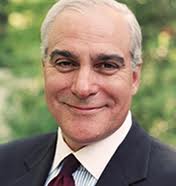 Career experience across the private, public and social or nonprofit sectors helps to develop significant leadership capacity. These “tri-sector leaders” develop sets of strengths that permit them to engage and collaborate across sectors.
Career experience across the private, public and social or nonprofit sectors helps to develop significant leadership capacity. These “tri-sector leaders” develop sets of strengths that permit them to engage and collaborate across sectors.
Harvard Business Review's recent article, “Triple-Strength Leadership” by Nick Lovegrove and Matthew Thomas, is based on interviews with more than 100 tri-sector leaders around the world. These intersecting leadership credentials serve to meet the multi-disciplinary challenges of society across sectors – from managing health care costs, to training the 21st century workforce, to implementing new technologies and stabilizing financial systems to foster sustainable economic growth.
In engaging with many of our clients, we recognize tri-sector leadership in many senior executives who are pursuing a mission-driven strategy for the benefit of their customers. Many have served in government and all work closely with government and regulators, often in shaping policy.
Although credit unions are nonprofit entities, they are also successful, efficient businesses that serve important missions and segments of the population. Forging intellectual threads from different sectors allows leaders to understand basic principles from each and to transcend constraints that single-sector managers encounter when dealing with cross-sector issues. Breaking down a siloed mentality best serves members.
There are challenges in developing tri-sector leaders, such as the wide disparity of incomes among business, government and nonprofit organizations. There are perceived cultural differences. Many business executives view government and nonprofit organizations as bureaucratic and ineffective. Some in government may view business executives as focusing on monetary self-interest and share price. The nonprofit world may believe they are the only ones focused on effectively building a sustainable global future.
Tri-sector leaders move beyond preconceptions and balance competing motives. The desire for personal wealth creation, usually associated with the private sector, is balanced with a need for positive and large-scale impact, usually associated with government. There is a strong sense of mission – a primary focus of nonprofits. Tri-sector leaders in business focus on creating shareholder value and appreciate the creation of public value as well.
Tri-sector leaders transfer skills learned in one sector and apply them in another, bringing innovation and creativity to serve the general good. Business executives may excel at allocating resources to capture attractive market opportunities. Government officials may bring competing interests together to create new legal and policy frameworks. Nonprofit managers learn creative ways to focus their limited resources and often longer time horizons to accomplish their mission. Tri-sector leaders use “contextual intelligence,” seeing parallels among sectors and accurately assess their differences to provide effective translation of skills and methods across sectors. This bolsters leadership and capacity thereby magnifying effectiveness.
Tri-sector leaders use their extensive networks to build teams and to convene diverse groups to address and resolve difficult tri-sector issues – repeatedly developing innovative solutions.
How do these tri-sector leaders develop? The career of a tri-sector leadership is usually not planned. Those interviewed said it happened organically, but it required a “prepared mind.” As Louis Pasteur said: “In the fields of observation, chance favors only the prepared mind.” From the outset, these leaders think about the set of skills, capabilities, values, experiences and impact required to succeed in general and to be prepared for career opportunities as they arise, regardless of the sector.
Tri-sector leaders clearly are needed, but how can their development be supported? Lovegrove and Thomas recommend a “lifecycle” approach, starting with an intellectual foundation through education at the start of a career, followed by practical pathways to allow movement from sector to sector throughout a career, without slowing forward momentum.
Academic institutions can educate leaders for business and society, preparing graduates to act with integrity and a sense of purpose. These graduates should be equipped to excel in for-profit, nonprofit, government and entrepreneurial enterprises. Employers can attract, develop and retain exceptional tri-sector talent.
Indeed, some firms in consulting, law and even IT firms such as IBM have training programs that teach understanding of both culture and values across sectors. Cross-sector experience can be systematically incorporated into the work environment by providing work on assignments involving private, public and nonprofit collaboration.
The value of collaboration across government, business and civil society working together to deliver lasting sustainable solutions is evident. Tri-sector leaders that are more idealistic, but pragmatic, rather than self-interested, can build bridges to help realize this goal.
The credit union industry serves as a role model, exhibiting this triple strength leadership to benefit both society and their members. The industry is well served by continuing to support the development of a new generation of tri-sector leadership.
Stuart R. Levine is chairman/CEO of Stuart Levine & Associates. Contact (516) 465-0800 or stuartlevine.com.
© 2025 ALM Global, LLC, All Rights Reserved. Request academic re-use from www.copyright.com. All other uses, submit a request to [email protected]. For more information visit Asset & Logo Licensing.







